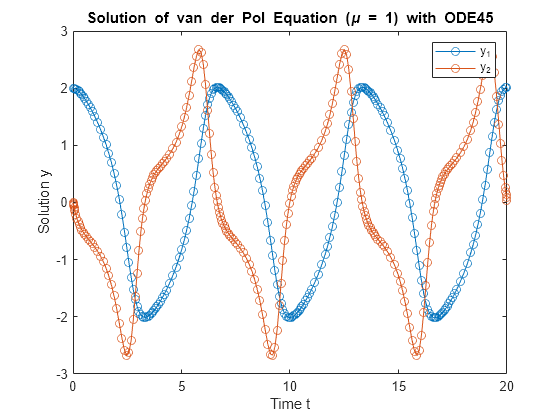Introduction to Integrator
Mix.install([
{:integrator, github: "woodward/integrator"},
{:kino_vega_lite, "~> 0.1"}
])Numerical Integration in Elixir
Numerical integration is easy with Integrator. For example, let’s integrate the
Van der Pol equation Integrator.SampleEqns.van_der_pol_fn for 20 seconds:
alias Integrator.DataSink
alias Integrator.Point
alias Integrator.SampleEqns
t_initial = Nx.f64(0.0)
t_final = Nx.f64(20.0)
x_initial = Nx.f64([2.0, 0.0])
{:ok, pid} = DataSink.start_link()
output_fn = &DataSink.add_data(pid, self(), &1)
opts = [type: :f64, output_fn: output_fn]
Integrator.integrate(&SampleEqns.van_der_pol_fn/2, t_initial, t_final, x_initial, opts)Now you can plot the results via Kino:
alias VegaLite, as: VL
data =
DataSink.get_data(pid, self())
|> Enum.map(&Point.to_number(&1))
|> Enum.map(fn point ->
%{t: t, x: x} = point
[
%{t: t, x: List.first(x), x_value: "x[0]"},
%{t: t, x: List.last(x), x_value: "x[1]"}
]
end)
|> List.flatten()
chart =
VL.new(width: 600, height: 400, title: "Solution of van der Pol Equation (μ = 1) with Dormand-Prince45")
|> VL.mark(:line, point: true, tooltip: true)
|> VL.encode_field(:x, "t", type: :quantitative)
|> VL.encode_field(:y, "x", type: :quantitative)
|> VL.encode_field(:color, "x_value", type: :nominal)
|> VL.data_from_values(data)
|> Kino.VegaLite.new()
|> Kino.render()Compare this with the plot from the Matlab ode45 manual page:


